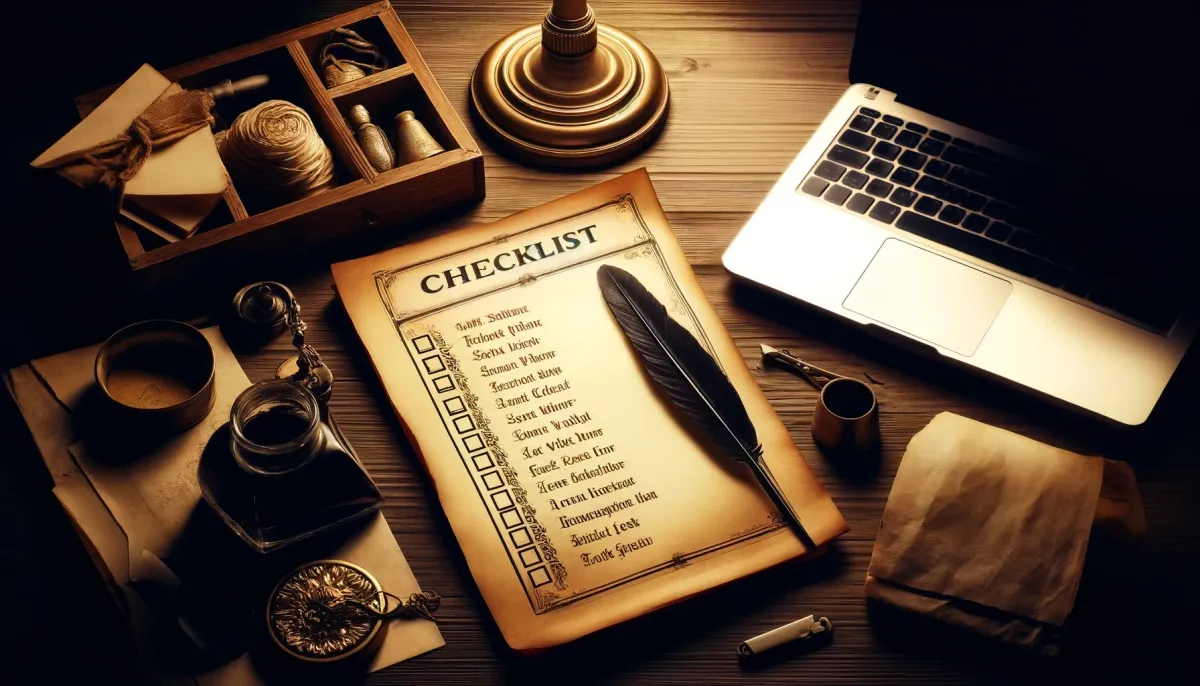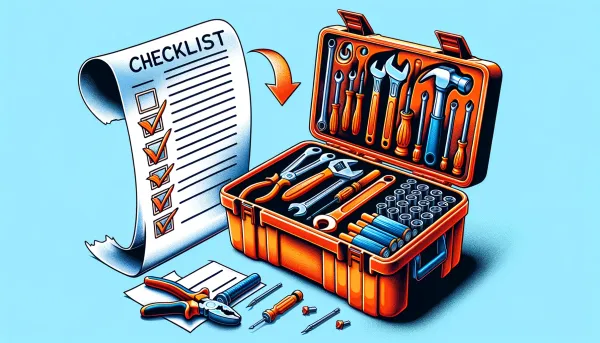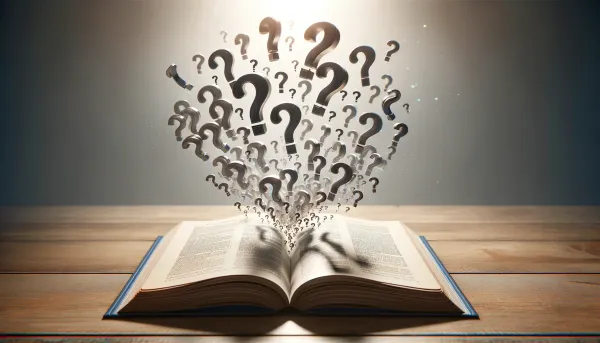How to create a working checklist?
Not every checklist is useful. This article describes steps of creating one.

Introduction
When you want predictable results, and you need to do a lot for achieving them, your memory begins to fail. For example, packing for a week-length trip. This is a simple action, but it consists of several stages. For many, it is infrequent, so even the appropriate memories might be missing. In general, you need to take documents and money, put some clothes. Everything seems to be done, but upon arrival home it turns out that there was perishable food in the refrigerator all this time, and getting rid of it is a very unpleasant task.
Life is complicated and consists of many nuances. These nuances are like fractals: the more you look, the more details you notice. The ability to consider the nuances and work with them determines what is usually called the quality of life.
There are different tools for dealing with the complexity of life: sophisticated devices, smart homes, various automation. But they all come after, and at first, there comes an understanding of what needs to be done to respect the complexity — checklist comes.
The stages of checklist’s creation with an example
Not all checklists are equally good. Next, we'll look at how to create a checklist and make it convenient to use. We will consider the example of the packing for a week-length trip already mentioned above. We will not cover all the details to avoid the unnecessarily lengthy description.
Let's start with the purpose. Why do you need preparation to a trip at all? You can just wake up and go. Well, while possible, it is unlikely that you will see the trip somewhat satisfying because there will be too many problems along the way.
The first thing that comes to mind in response to the question: “Why to prepare for a trip?” usually sounds incoherent, unless, of course, you are trained in goals setting. Something like: “So that the trip will be okay.” It sounds vague, but there is no issue with this. We will turn to the thinking tools of the Japanese industry and get a more decent result. In lean manufacturing, there is a “5 whys” technique. It suggests repeatedly asking “why” to search for deeper causes of phenomena [1]. We won’t ask “why?”, but “what is?”, and not five times, but once. Otherwise, the article may stretch indefinitely.
What is “So that the trip will be okay”? Let's give a more detailed description:
- The trip is comfortable.
- Upon return, you do not have to solve household problems provoked by the long absence.
Great, we have a detailed description of the purpose. It cannot be said that we have discovered the universal law of a good trip. If you are employed or run a business, then it would be worth adding something about the delegation of work while you are out of the office. If you have animals, then there could be one more goal. Pet owners usually care about the well-being of their pets. For the sake of brevity, the two already stated parts of the purpose will be enough for us. Now we need to figure out how to achieve them.
How do I achieve comfort while traveling? I need clothes, toiletries, and electronics.
How to avoid problems upon returning home? It is necessary to throw away perishable food, close the windows, turn off electrical appliances.
So, we got the first version of the checklist:
☐ Take clothes, toiletries, and electronics.
☐ Throw away perishable food, close windows, turn off electrical appliances.
Did we get a good tool? No, it's still quite raw. Imagine yourself running in a hurry the day before departure. You require clear instructions, not this mess. To begin with, it is necessary to separate logically unrelated items from each other so that one unfinished task does not block another.
☐ Take clothes.
☐ Take toiletries.
☐ Take electronics.
☐ Throw away perishable food.
☐ Close windows.
☐ Turn off electrical appliances.
Now our points have become independent.
If you live in an ordinary apartment with one refrigerator, then the last three points look quite sufficient. After all, there is a high chance that you will not become confused while doing any of them. But the first three points are still too vague, they do not allow you to unload your head and follow the instructions. Again, let's use the question, “what is?”
What is “take clothes”? The simplified answer is as follows:
☐ Take T-shirts by the number of nights.
☐ Take the underwear by the number of nights.
☐ Take spare trousers.
☐ Take a warm sweater.
What is “take toiletries”?
☐ Take a toothbrush.
☐ Take dental floss.
☐ Take a toothpaste.
☐ Take shampoo.
☐ Take a shower gel.
☐ Take deodorant.
What is “take electronics”?
☐ Take a laptop with charger.
☐ Take a charger for the phone.
☐ Take the headphones' charger.
Let's look at our list of preparations for the trip in its entirety:
☐ Take T-shirts by the number of nights.
☐ Take the underwear by the number of nights.
☐ Take spare trousers.
☐ Take a warm sweater.
☐ Take a toothbrush.
☐ Take dental floss.
☐ Take a toothpaste.
☐ Take shampoo.
☐ Take a shower gel.
☐ Take deodorant.
☐ Take a laptop with charger.
☐ Take a charger for the phone.
☐ Take the headphones' charger.
☐ Throw away perishable food.
☐ Close windows.
☐ Turn off electrical appliances.
It's almost good now, let's remove the excess phrases and punctuation. After all, the checklist will be used in a certain context, and it will give the necessary hints. In some sense, a checklist is not even a completely literary text, you can sacrifice some spelling rules to reduce noise and improve the quality of the instrument.
So, the checklist for preparing for the trip:
☐ T-shirts by number of nights
☐ Underwear by number of nights
☐ Spare trousers
☐ Warm sweater
☐ Toothbrush
☐ Dental floss
☐ Toothpaste
☐ Shampoo
☐ Shower gel
☐ Deodorant
☐ Laptop with charger
☐ Phone charger
☐ Headphones charger
☐ Throw away perishable food
☐ Close windows
☐ Turn off electrical appliances
There are two types of items in the list: “something” (e.g., Shampoo) and “do something” (e.g., Close windows). It's not a big deal, we're interested in the result of applying this list, not the stylistic consistency.
The checklist now seems ready, each point brings understandable benefits and can be completed in a few actions. What we haven't found for himself yet is a place. The context has already been mentioned above, let's move on to it.
A checklist is, on the one hand, a tool, and on the other hand, documentation. Documentation has plenty of problems, and one of them is detachment. Will you remember about the checklist when you prepare for the next trip? Very, very likely not. But what to do? Print it and put it in an empty suitcase, so it will be in place at the right time.
Conclusion
It’s easy to lose the very method of creating a checklist, here is a brief repetition:
- Determine the approximate purpose of the checklist.
- Use the question “what is?” to clarify the purpose of the checklist as many times as necessary. The defined purpose may consist of several parts.
- Answer the question “how to achieve?” for each part of the purpose.
- Divide logically independent parts of the answer into separate points.
- If some points are vague, clarify them with the question “what is?” This question should be applied to the items until they become specific. A specific item is one that is understandable by its executor.
- Remove unnecessary literary components and punctuation from the list.
- Place the checklist as close as possible to the place of application.
Is this knowledge enough to create a working checklist? Yes, it is! Is there anything else about checklists’ creation? Absolutely. For example, the fact that the checklist can evolve as its purpose is clarified or its context changes. But this is the topic for another article. Thank you for reading. Let your checklists do the decent work for you!
List of links:
[1] “Five whys” from Wikipedia



